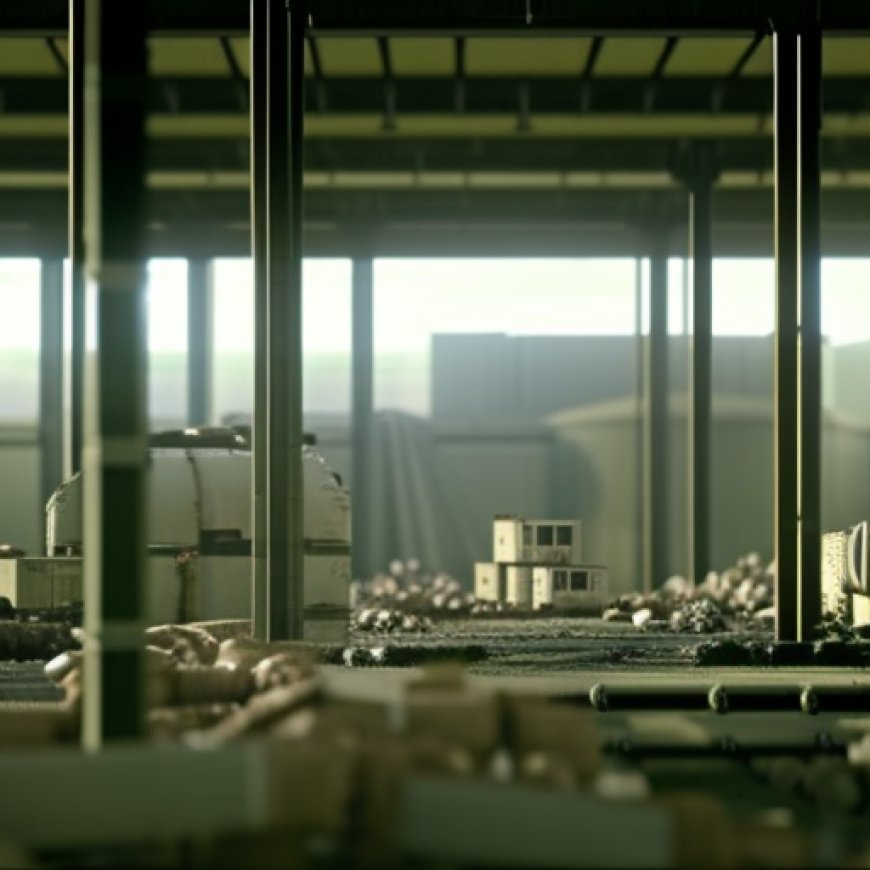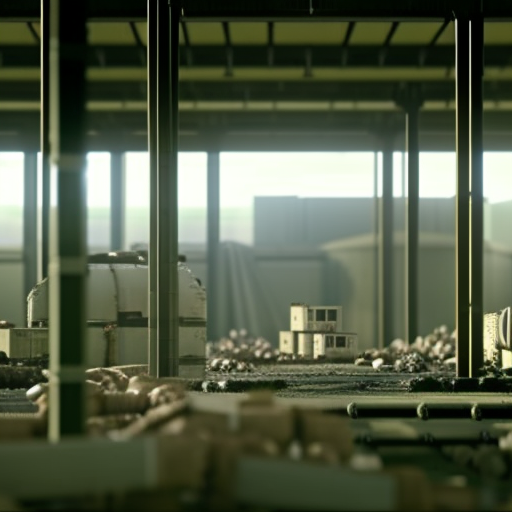This SoCal hazardous waste facility could get a new permit despite past violations
Neighbors balk at renewed permit for hazardous waste facility Los Angeles Times


California Regulators Consider Renewing Permit for Hazardous Waste Treatment Facility
California regulators are facing a decision on whether to grant a renewed permit for a hazardous waste treatment facility in Santa Fe Springs. The Department of Toxic Substances Control (DTSC) is considering renewing the permit for Phibro-Tech, despite ongoing court battles over alleged violations. Environmental and community groups are expressing concern and urging the DTSC to deny the permit renewal due to the company’s history of violating state rules.
Location and Environmental Impact
The Santa Fe Springs facility is located near the unincorporated area of Los Nietos, a predominantly Latino neighborhood in Los Angeles County that is considered one of the most pollution-burdened communities in the state. The hazardous waste treatment facility is approximately 550 feet away from the nearest homes.
History of Violations
Phibro-Tech has a record of dozens of violations over the past decade, according to a state analysis of its regulatory record. Last year, the DTSC took legal action against the company, alleging that state inspectors had found leaking containers and other violations during site inspections before the COVID-19 pandemic.
Controversial Permit Renewal Decision
Despite the violations and ongoing legal battles, DTSC staff informed concerned neighbors that they had tentatively decided to renew the permit for the Santa Fe Springs facility. The agency cited a decrease in serious violations in recent years and stated that the facility did not pose a significant threat to the community. However, a final decision will be made after considering public comments.
Sustainable Development Goals (SDGs)
- Goal 3: Good Health and Well-being – Ensuring the safety and well-being of communities impacted by hazardous waste facilities.
- Goal 11: Sustainable Cities and Communities – Protecting communities from pollution and promoting sustainable development in urban areas.
- Goal 12: Responsible Consumption and Production – Encouraging the recycling and proper treatment of hazardous waste to minimize environmental harm.
- Goal 13: Climate Action – Addressing the environmental impact of hazardous waste treatment facilities and promoting sustainable practices.
- Goal 15: Life on Land – Protecting the environment and preventing contamination of soil and water sources.
Phibro-Tech’s Operations and Defense
The Santa Fe Springs facility receives hazardous waste and treats it to extract chemicals and metals like copper, which can be used in various industries. Phibro-Tech argues that it recycles waste that would otherwise end up in landfills or deep wells, providing a more environmentally friendly alternative to mining. The company claims that its compliance record has significantly improved in recent years and that objections raised by critics are based on misunderstandings of its current operations.
Community Concerns and Opposition
Los Angeles County Supervisor Janice Hahn has publicly called for the facility to be shut down until it can comply with the law, citing the potential threat it poses to the community. Local residents and environmental groups, such as Neighbors Against Phibro Tech and Earthjustice, have expressed concerns about the facility’s history of violations and its impact on the surrounding environment. They argue that fines have become a mere cost of doing business for Phibro-Tech, highlighting a pattern of unaccountability.
Environmental Review and Pollution Levels
Opponents of the permit renewal claim that the DTSC failed to conduct a thorough environmental review and did not collect sufficient information about pollution levels beyond the facility’s borders. Neighbors have raised concerns about industrial contamination, including the presence of hexavalent chromium, a known carcinogen. Phibro-Tech asserts that it has taken responsibility for past contamination and has implemented measures to prevent further incidents.
Conclusion
The decision to renew the permit for the hazardous waste treatment facility in Santa Fe Springs has raised significant concerns among environmental and community groups. The DTSC’s consideration of the permit renewal, despite the company’s history of violations, highlights the need for a careful evaluation of the facility’s compliance with state rules and its impact on the surrounding community.
SDGs, Targets, and Indicators
1. Which SDGs are addressed or connected to the issues highlighted in the article?
- SDG 3: Good Health and Well-being
- SDG 6: Clean Water and Sanitation
- SDG 11: Sustainable Cities and Communities
- SDG 12: Responsible Consumption and Production
- SDG 13: Climate Action
- SDG 15: Life on Land
2. What specific targets under those SDGs can be identified based on the article’s content?
- SDG 3.9: By 2030, substantially reduce the number of deaths and illnesses from hazardous chemicals and air, water, and soil pollution and contamination.
- SDG 6.3: By 2030, improve water quality by reducing pollution, eliminating dumping and minimizing release of hazardous chemicals and materials, halving the proportion of untreated wastewater, and increasing recycling and safe reuse globally.
- SDG 11.6: By 2030, reduce the adverse per capita environmental impact of cities, including by paying special attention to air quality and municipal and other waste management.
- SDG 12.4: By 2020, achieve the environmentally sound management of chemicals and all wastes throughout their life cycle, in accordance with agreed international frameworks, and significantly reduce their release to air, water, and soil in order to minimize their adverse impacts on human health and the environment.
- SDG 13.1: Strengthen resilience and adaptive capacity to climate-related hazards and natural disasters in all countries.
- SDG 15.9: By 2020, integrate ecosystem and biodiversity values into national and local planning, development processes, poverty reduction strategies, and accounts.
3. Are there any indicators mentioned or implied in the article that can be used to measure progress towards the identified targets?
- Number of violations and compliance history of the hazardous waste treatment facility.
- Presence of hazardous chemicals and materials in the surrounding environment.
- Efforts to improve compliance and reduce violations.
- Reduction of pollution levels in air, water, and soil.
- Cleanup efforts and reduction of contaminants in the soil.
Table: SDGs, Targets, and Indicators
| SDGs | Targets | Indicators |
|---|---|---|
| SDG 3: Good Health and Well-being | Target 3.9: By 2030, substantially reduce the number of deaths and illnesses from hazardous chemicals and air, water, and soil pollution and contamination. | – Number of violations and compliance history of the hazardous waste treatment facility. – Presence of hazardous chemicals and materials in the surrounding environment. |
| SDG 6: Clean Water and Sanitation | Target 6.3: By 2030, improve water quality by reducing pollution, eliminating dumping and minimizing release of hazardous chemicals and materials, halving the proportion of untreated wastewater, and increasing recycling and safe reuse globally. | – Number of violations and compliance history of the hazardous waste treatment facility. – Reduction of pollution levels in air, water, and soil. – Efforts to improve compliance and reduce violations. |
| SDG 11: Sustainable Cities and Communities | Target 11.6: By 2030, reduce the adverse per capita environmental impact of cities, including by paying special attention to air quality and municipal and other waste management. | – Number of violations and compliance history of the hazardous waste treatment facility. – Presence of hazardous chemicals and materials in the surrounding environment. – Efforts to improve compliance and reduce violations. |
| SDG 12: Responsible Consumption and Production | Target 12.4: By 2020, achieve the environmentally sound management of chemicals and all wastes throughout their life cycle, in accordance with agreed international frameworks, and significantly reduce their release to air, water, and soil in order to minimize their adverse impacts on human health and the environment. | – Number of violations and compliance history of the hazardous waste treatment facility. – Reduction of pollution levels in air, water, and soil. – Cleanup efforts and reduction of contaminants in the soil. |
| SDG 13: Climate Action | Target 13.1: Strengthen resilience and adaptive capacity to climate-related hazards and natural disasters in all countries. | – Number of violations and compliance history of the hazardous waste treatment facility. – Reduction of pollution levels in air, water, and soil. – Cleanup efforts and reduction of contaminants in the soil. |
| SDG 15: Life on Land | Target 15.9: By 2020, integrate ecosystem and biodiversity values into national and local planning, development processes, poverty reduction strategies, and accounts. | – Number of violations and compliance history of the hazardous waste treatment facility. – Presence of hazardous chemicals and materials in the surrounding environment. – Efforts to improve compliance and reduce violations. – Cleanup efforts and reduction of contaminants in the soil. |
Behold! This splendid article springs forth from the wellspring of knowledge, shaped by a wondrous proprietary AI technology that delved into a vast ocean of data, illuminating the path towards the Sustainable Development Goals. Remember that all rights are reserved by SDG Investors LLC, empowering us to champion progress together.
Source: latimes.com

Join us, as fellow seekers of change, on a transformative journey at https://sdgtalks.ai/welcome, where you can become a member and actively contribute to shaping a brighter future.







